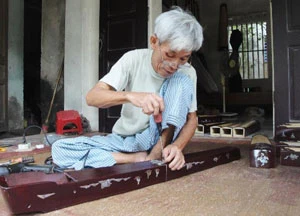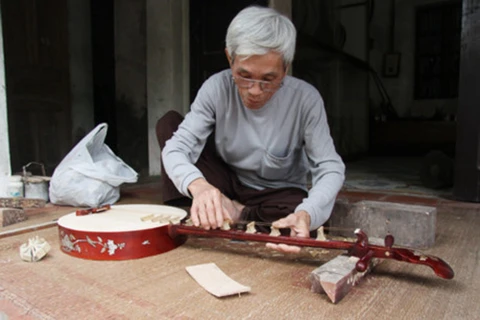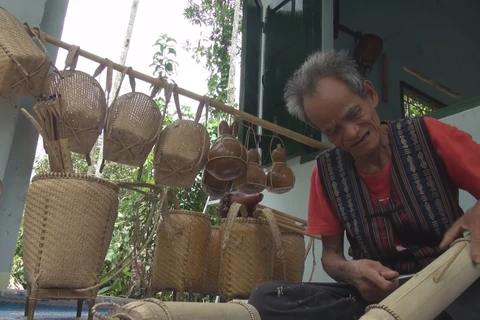Hanoi (VNA) - Artisan Dao Van Soan is dedicated to the preservation of the nation’s music with a hope of fueling youths’ love for traditional musical instruments as well as providing young people with related knowledge and skills.
In a peaceful countryside of Dong Lo commune, Hanoi’s Ung Hoa district, the sound of wood chiseling and pricking from Dao Xa village has become a familiar and loving norm. The village has been well known for its craft of making traditional musical instruments for centuries.
After two hours driving from the city’s centre to the village, we finally reached the house of Dao Van Soan, a dedicated local artisan.
Ups and downs of the craft village
The traditional craft of Dao Xa village dates back over 200 years ago. It was founded by a carpenter named Dao Xuan Lan and hand down to his offspring.
Back to those early days, artisans in Dao Xa brought their craft to across country from north to south.
During the nation’s struggles for independence against France and the US, the craft was booming. However, after the liberation of South Vietnam, it felt into oblivion for a long time due to a shortage of makers and consumers.
Nowadays, the village is where people can look for most of traditional musical instruments like dan bau (a monochord), dan tranh (16-chord zither), dan nguyet (a full-moon-shaped guitar with two strings), and dan nhi (an upright two-string fiddle). Locals still worship the founder of the craft and organise annual festival to remember and honour him.
Soan said many popular musical instrument making workshops in Thanh Hoa, Nam Dinh, Sai Gon like those of Quoc Dan, Ho Thi Nga, and Le Thi Hong Gam are established by Dao Xa villagers.
Patience is key to making traditional musical instruments
According to Soan, the hardest part of making a good instrument is to find the right materials.
He said: “Traditionally, the best wood is from Siamese rosewood and Chinese parasol trees and must be left dried for two years before use. Many instruments also require python skin to make. As such, the making of an instrument need lots of hard work and time.”
A completed instrument means years of craft learning to the craftsman. The craft requires a lot of patience, skill, and energy. An instrument builder must master or, at least, know carpentry, not to mention having a good ear for music. It’s a matter of understanding wood, from selecting and drying the wood to shaping the body, attaching the neck, polishing, smoothing, fitting the strings, and completing the final decoration. All the work is done manually using traditional techniques.
A mind preoccupied by the future of the traditional craft
For a long time, the Dao Xa craft felt into oblivion for a lack of makers and consumers. Until the 1990s when the State revived the craft village, the work was brought to life again.
“Young people don’t like this craft as it has strict requirements in terms of art and techniques. The learning process often takes up at least two years and many of them do not have patience to follow the work. I was the only one of the old generation to keep the craft alive at the moment. I am 80 years old now so I hope young people will care more about the craft so that it won’t be lost,” Soan said.
 Young people who like traditional musical instruments often visit Soan’s workshop (Photo: Vietnam Plus).
Young people who like traditional musical instruments often visit Soan’s workshop (Photo: Vietnam Plus). The old artisan is willing to support people, especially youths, who come to learn the craft. “I can teach them free of charge if they have the passion for it,” he said.
Soan has been honouned as the folk artisan of the nation and the excellent artisan of Hanoi. Currently, he is handing down on the craft to his son, son-in-law, and a number of young people at his workshop./.























